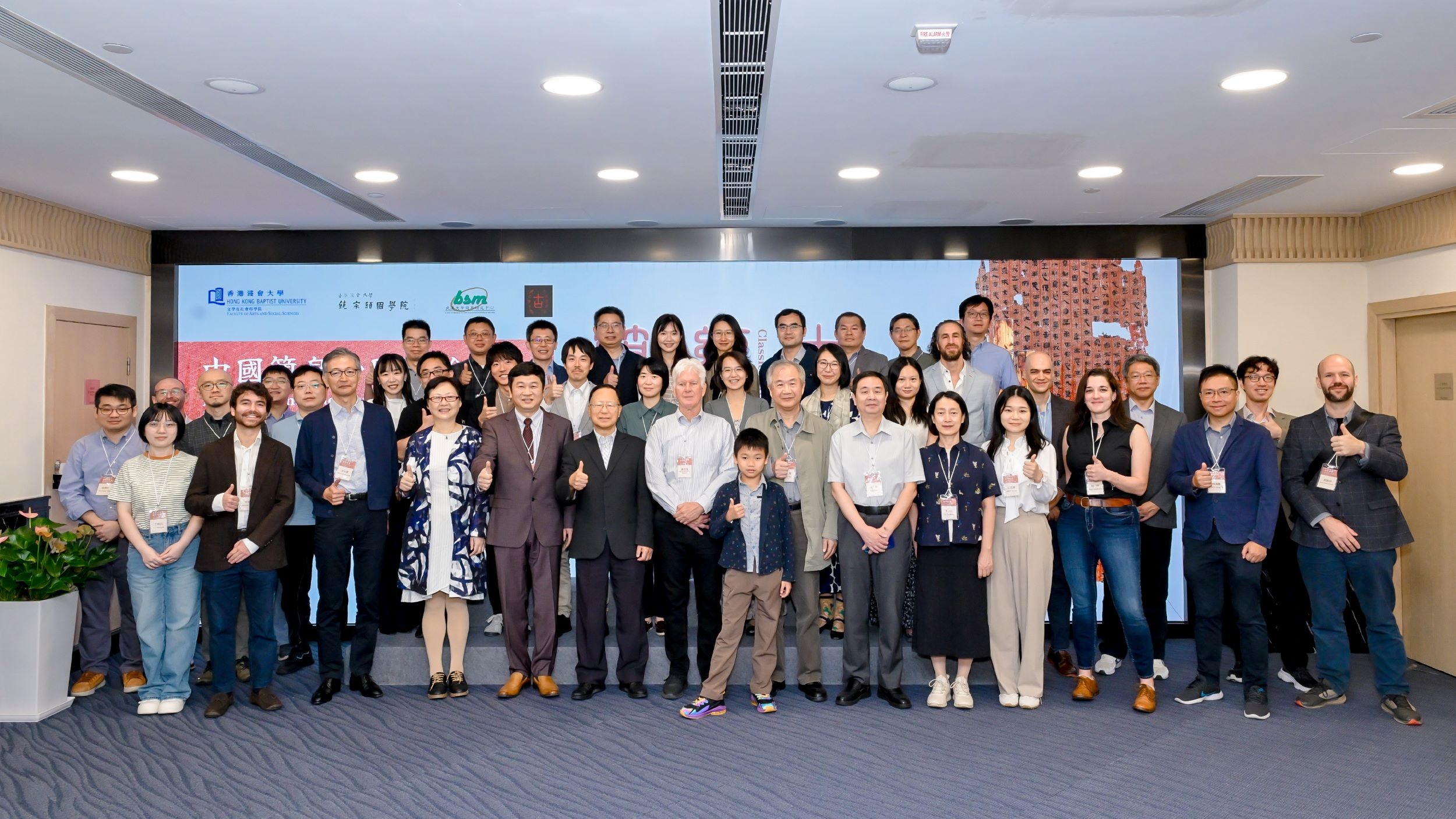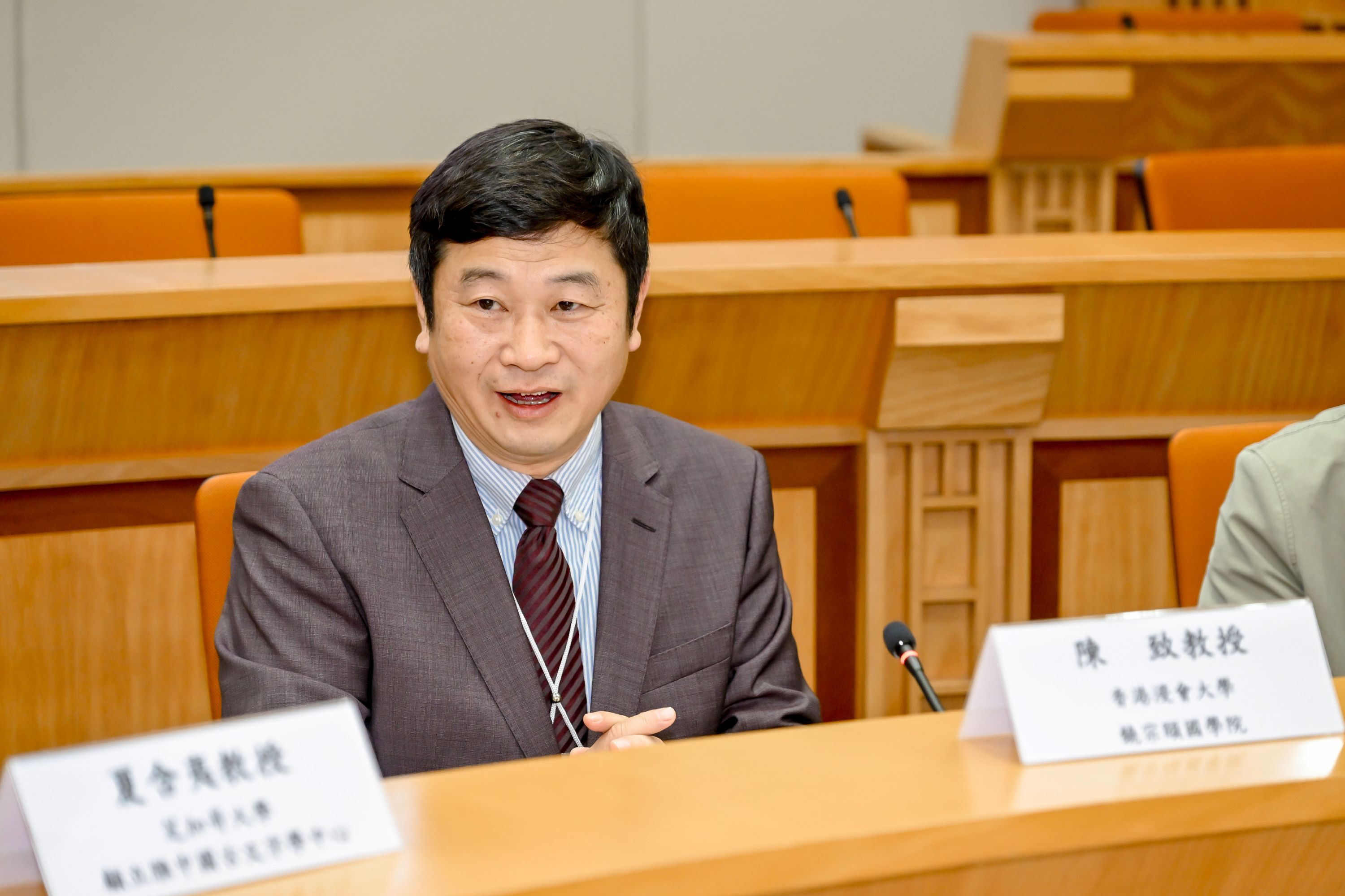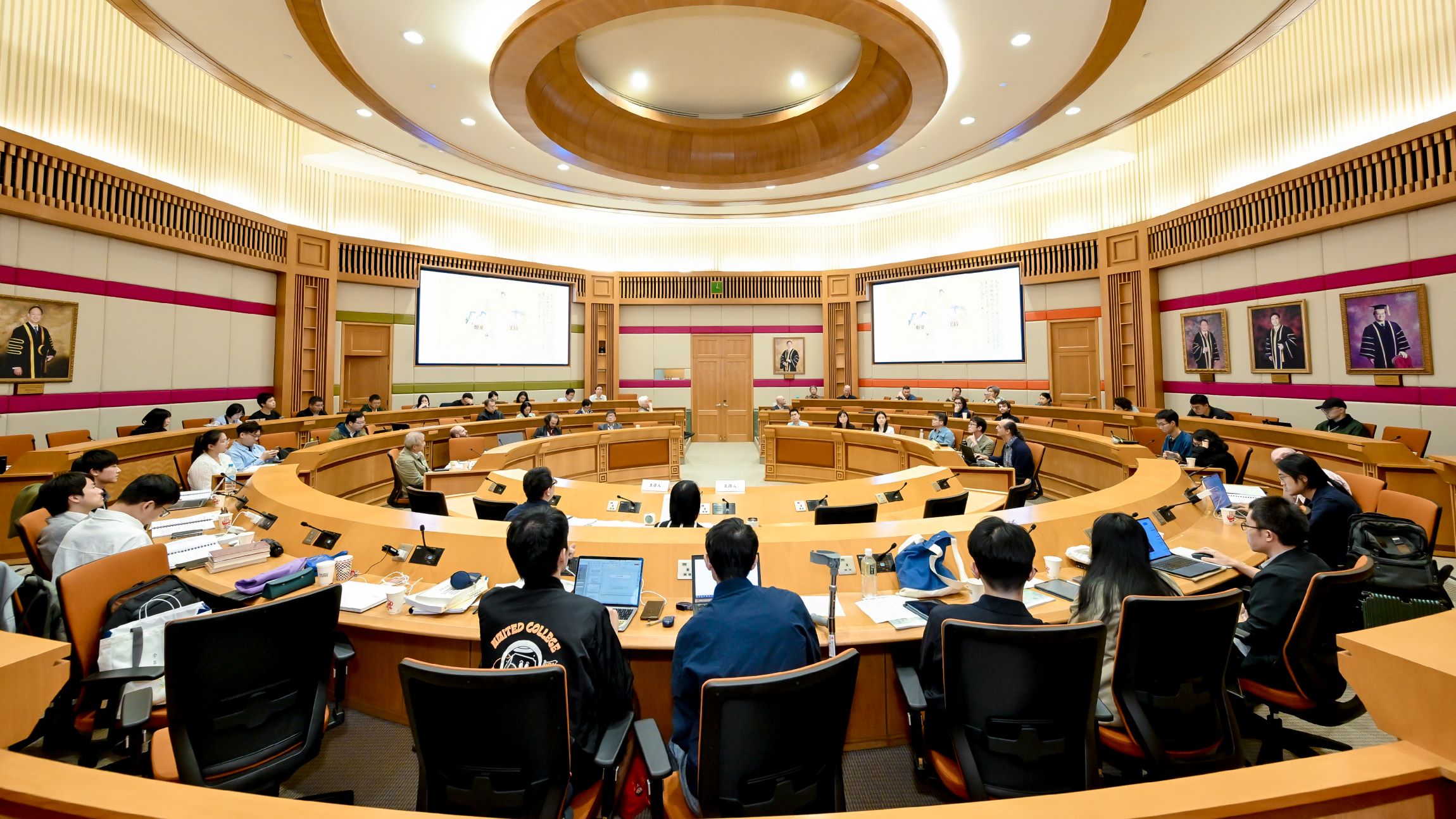Past Events
International Conference on Chinese Bamboo and Silk Manuscripts 2024: Bamboo Slips, Writings on Silk, Classical Texts, and Early China History




From October 26 to 27, 2024, the “International Conference on Chinese Bamboo and Silk Manuscripts 2024: Bamboo Slips, Writings on Silk, Classical Texts, and Early Chinese History” was held at Hong Kong Baptist University. The event was jointly organized by the Jao Tsung-I Academy of Sinology at Hong Kong Baptist University, the Center of Bamboo and Silk Manuscripts of Wuhan University, and the Creel Center for Chinese Paleography at the University of Chicago. The conference aimed to explore the significance of bamboo and silk manuscript studies for interpreting classical texts and reconstructing ancient history. Scholars specializing in bamboo and silk manuscripts and ancient Chinese characters from mainland China, Hong Kong, Taiwan, the United States, Italy, Japan, South Korea, and other regions came together facilitating meaningful academic exchanges and collaborative research. (For the list of scholars, see the end of the article.)


In his opening address, Professor Chen Zhi, President of UIC, Director of the Jao Tsung-I Academy of Sinology, highlighted the crucial role of excavated documents. He emphasized that discoveries of bamboo and silk manuscripts have significantly advanced research on classical texts and civilizations from the Pre-Qin and Qin-Han periods. These findings have uncovered many details about ancient thought and social practices, thus offering a more comprehensive understanding of ancient Chinese history.


Professor Chen Wei, Director of the Center of Bamboo and Silk Manuscripts of Wuhan University, expressed deep appreciation for the efforts and contributions of the participating scholars in bamboo and silk manuscript studies. He especially thanked scholars such as Cheung Kwong Yue, Kiyoshi Miyake, and Yang Zhenhong for their long-term support. He noted that research methods and perspectives in this field are continually evolving, and he hoped that this forum would inspire new research directions, foster innovative academic achievements, and enhance opportunities for global scholarly exchange.


Professor Edward L. Shaughnessy, the Lorraine J. and Herrlee G. Creel Distinguished Service Professor in Early Chinese Studies at the University of Chicago, reflected on the origins of the bamboo and silk manuscripts forum twenty years ago, sharing many cherished old photographs. He noted that the International Conference on Bamboo and Silk Manuscripts has not only facilitated deep exchanges across regions and disciplines but also driven significant progress in the field. With the involvement of Professor Chen Zhi and the Jao Tsung-I Academy of Sinology, the forum’s scale and influence have grown annually, becoming an essential platform for international exchange in bamboo and silk manuscript studies.


Over the two-day forum, 44 scholars from around the world engaged in lively exchanges and in-depth discussions. The forum was divided into eight groups, covering a wide range of topics. Scholars discussed issues such as the Warring States bamboo manuscripts represented by the Tsinghua bamboo slips, official and burial documents from the Chu region, legal documents unearthed from the Qin, Han, and Jin periods, specific issues in Qin and Han daybooks and the Northwest Han bamboo manuscripts, textual interpretation and collation of classical and excavated documents, and historical investigations in ancient documents. These discussions not only involved the reading and collation of texts but also explored the social and cultural implications and institutional changes behind the documents, presenting the interdisciplinary research potential and future development trends of bamboo and silk manuscript studies from multiple perspectives. Notably, Mr. Zhao Xiaobin from Jingzhou Museum showcased bamboo slips related to “The Words of the Book of Songs and the Book of Documents” unearthed from Tomb 46 of the Zaolinpu paper mill in Jingzhou, some of which also appear in transmitted literature, sparking lively on-site discussions.


Participants, including students and independent observers, found the conference highly enlightening and gained new insights into the diverse paths in bamboo and silk manuscript studies. A young doctoral student remarked that the forum’s scholars provided substantial insights, particularly highlighting Professor Pham Lee-moi’s detailed reading of the phrase “gu cai wu, chu yu zuo 鼓材物,出於作” in the “Heng Xian 亙先” manuscript. Professor Pham’s in-depth exploration of the mechanisms of the generation of all things, from physical generation to the operation of the cosmos, exemplified a classic case of abstract thinking and concrete analysis. Another graduate student was impressed by Professor Shen Pei’s report, calling it “a primary example for how to use excavated documents to collate transmitted ancient books.” Students also mentioned presentations by scholars such as Rens Krijgsman and Guo Jue, noting that their sociological perspectives expanded the multidisciplinary research horizons of ancient documents. These presentations showcased both the challenges and the potential of future bamboo and silk manuscript studies.
The interdisciplinary research studies presented by scholars allowed attendees to further explore the breadth and depth of bamboo and silk manuscript studies. This conference also strengthened the cross-regional and cross-generational academic network in the field, highlighting the close ties and collaborative potential of bamboo and silk manuscript research on a global scale.
In his closing remarks, Professor Shaughnessy praised the conference’s vibrant academic atmosphere and invited several young scholars from different regions, including Liu Hsin-ning, Maddalena Poli, Kazunari Miyajima, Tian Tian, and Tang Pui Ling, to share their conference insights. This forum brought together the latest research achievements of leading figures in the global bamboo and silk manuscript field, providing young scholars with an excellent opportunity for in-depth learning and new thinking. The next International Forum on Bamboo and Silk Manuscripts will be hosted by the University of Chicago and is expected to be held at the University of Chicago Hong Kong Campus. We look forward to more young scholars participating, injecting new vitality and innovative perspectives into the development of bamboo and silk manuscript studies, and presenting a beautiful picture of generational academic inheritance.
Participants' Report Directory (in order of presentation)
夏含夷(SHAUGHNESSY, Edward):再論清華大學藏戰國竹簡的真實性——答葉翰教授
劉國忠:從清華簡看《逸周書》的三「訓」篇
黃冠雲:清華簡《赤鳩之集湯之屋》的字裡行間
范麗梅:從清華簡〈五紀〉之「梪」說上博〈亙先〉之「䛠」與「主」
程少軒:清華簡《四時》「十又二歲乃合」小考
宮島和也(MIYAJIMA, Kazuya):試談清華簡《楚居》的語言特徵
梅 林(POLI, Maddalena):清華簡《畏天用身》研讀札記
李博威(LEBOVITZ, David J.):清華簡《周公之琴舞》演唱結構重探
史亞當(SCHWARTZ, Adam Craig):梳理安大簡「孔子語錄類」散文文獻《華繁》篇的體例和主題特點
鄧佩玲:清華簡《大夫食禮》「大夫辸(速)之義(儀)」句的釋讀及其相關問題
趙曉斌:荆州棗紙簡《詩書之言》摘引《羽訐》與傳世本《古文尚書.大禹謨》
葛覺智(GREBNEV, Yegor):「書」類文獻中互相矛盾的論述
周博群:淺談上古漢語中的「重」、「力」互用現象
張喜儀:《莊子》三種無為觀探微
羋開樂(PULINI, Michele):從出土文獻的角度再論上古漢語派生型態與同源詞的問題
海老根量介(EBINE, Ryosuke):嶽麓秦簡「㝅」字考——兼談《日書》中的「㝅(榖)」
沈 培:談談出土醫書和傳世醫書跟「溲」搭配的從「廷」、從「呈」和從「巠」之字的訓釋
陳鴻圖:出土文獻與《楚辭》名物考釋
范常喜:漢簡名物中若干「柜」字合證
蔣 文:從「蜀郡作牢」到「君幸酒」:淺談漆器題銘中的特殊省略
雷海龍:漢代觶、卮、樽考辨
李天虹:包山楚簡官文書簽署文字「××戠之」「××爲李」補識
于夢欣:楚遣冊簡所記「斗」補釋
魯家亮:江漢地區戰國秦漢遣策書寫格式的變化及其原因新探
武致知(KRIJGSMAN, Rens):讀甚麼?初識墓葬裡的文學
來國龍:安大簡《仲尼曰》中的「反切拼音字」
陳 偉:禁「里人令軍人得爵受賜者出錢酒肉飲食之」令復原與解讀
何有祖:嶽麓秦簡所見繫囚設施試解
徐 剛:張家山漢簡《津關令》與漢初的地域格局
田 天:張家山336號漢墓《朝律》與文帝初年的政局
章瀟逸、丁善泉:長沙五一廣場東漢簡牘「王廣不縱周順案」文書再探
楊振紅:周初平定商邑之亂與歷史記載之變形
郭 珏:早期中國的識讀群體(Literate Community)的社會史考察:以戰國楚郢都紀南城遺址為中心
宮宅潔(MIYAKE, Kiyoshi):戰爭與貨幣——秦的佔領統治與半兩錢的流通
劉國勝、趙翠翠:試析秦漢日書中圖、表寫作的幾種特殊形式
肖芸曉:睡虎地漢簡《質日》的字迹、代筆、與他人事務
金鍾希(KIM, Chong Hi):秦、漢初中大夫令的雙重管理結構
費安德(FECH, Andrej):從北大漢簡〈妄稽〉和《毛傳》看漢朝正妻與妾室之分
馬增榮:漢初中尉考:以張家山336號墓《功令》為中心
沈思聰:甲渠候官誠北部、吞遠部轄隧情況新論——兼談甲渠候官河南道上塞各部郵書路線的分布
黃浩波:同縣同隧:西北漢簡所見戍卒的部署原則
劉欣寧:分產、立嗣與訴訟:臨澤黃家灣灘西晉簡冊研究